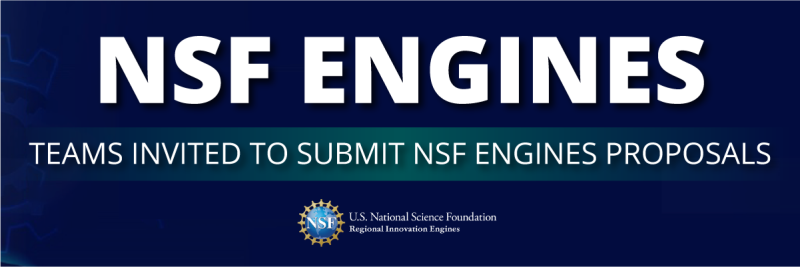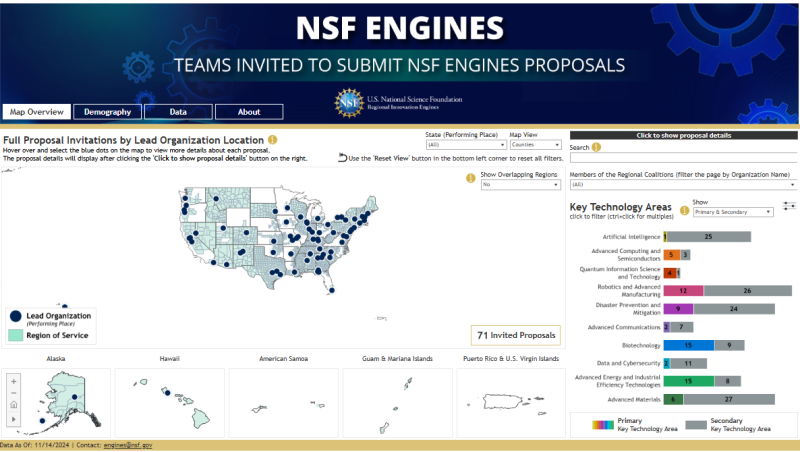Explore data and collaborate with the 71 NSF Regional Innovation Engines proposers nationwide
To foster transparency and collaboration nationwide, see more data about organizations interested in working with the 71 teams that were recently invited to submit proposals to the February 2025 full proposal deadline.
The U.S. National Science Foundation Regional Innovation Engines (NSF Engines) program recently announced that 71 teams spanning nearly every state and territory in the nation are moving to the next round of the second competition, eligible to submit full proposals in February 2025.
Today the NSF Engines program is publishing additional data on more than 1,600 distinct organizations that are part of the broad-based coalitions that have already come together to form the 71 teams. By sharing these data, NSF aims to aid teams in growing their coalitions by encouraging additional interested organizations to consider partnering with their regions.
"The NSF Engines program is transformational for our nation," said Erwin Gianchandani, NSF assistant director for Technology, Innovation and Partnerships. "By strengthening the regional consortia proposing to the program, we will maximize on our potential to spur research, innovation and economic growth, particularly in parts of the country that have not received as much investment or attention until now. Ultimately, these efforts will ensure American competitiveness by accelerating technological innovation and the training of the American workforce for good-quality, high-wage jobs."
Under the current NSF Engines funding opportunity, organizations were required to submit a letter of intent to demonstrate their interest in applying. NSF published data from the letters in July 2024. Teams were then required to submit preliminary proposals by Aug. 6, which were then reviewed by panels of experts whose guidance helped NSF to select teams that will progress to the next stage of merit review. These teams will submit full proposals by February 2025.
Notably, NSF aims to foster cross-sector connections, particularly engaging organizations that may not typically work together or otherwise submit to NSF funding opportunities. For example, of the 71 teams invited to submit full proposals to the NSF Engines program, 23 — or nearly one-third — are led by organizations located in NSF Established Program to Stimulate Competitive Research jurisdictions; 13 are led by organizations new to NSF funding; 23 are led by nonacademic organizations; and nine are led by a minority-serving institution. In addition, nearly 75% of the more than 1,600 organizations engaged in the preliminary proposals, from which NSF selected these 71 teams, are from nonacademic organizations, highlighting the broad interest from the for-profit, nonprofit, state and local government and investor communities.
For more information about the teams moving to the next round, including partner information and how to connect with the invited proposing teams, explore the interactive map, search the members and/or download the data.
The current NSF Engines solicitation and competition is consistent with NSF's Fiscal Year 2025 budget request; however, NSF's ability to make new NSF Engines awards will be based on final FY 2025 appropriations. Read the October 2024 announcement for more information about the 71 teams and the competition.


